A Collision On Patriot Way: Tommy Ketterhagen And The Search For Justice
A Collision On Patriot Way: Tommy Ketterhagen And The Search For Justice
What had happened to Tommy inspired rage, heartache, hope, despair—and questions of injustice and corruption.
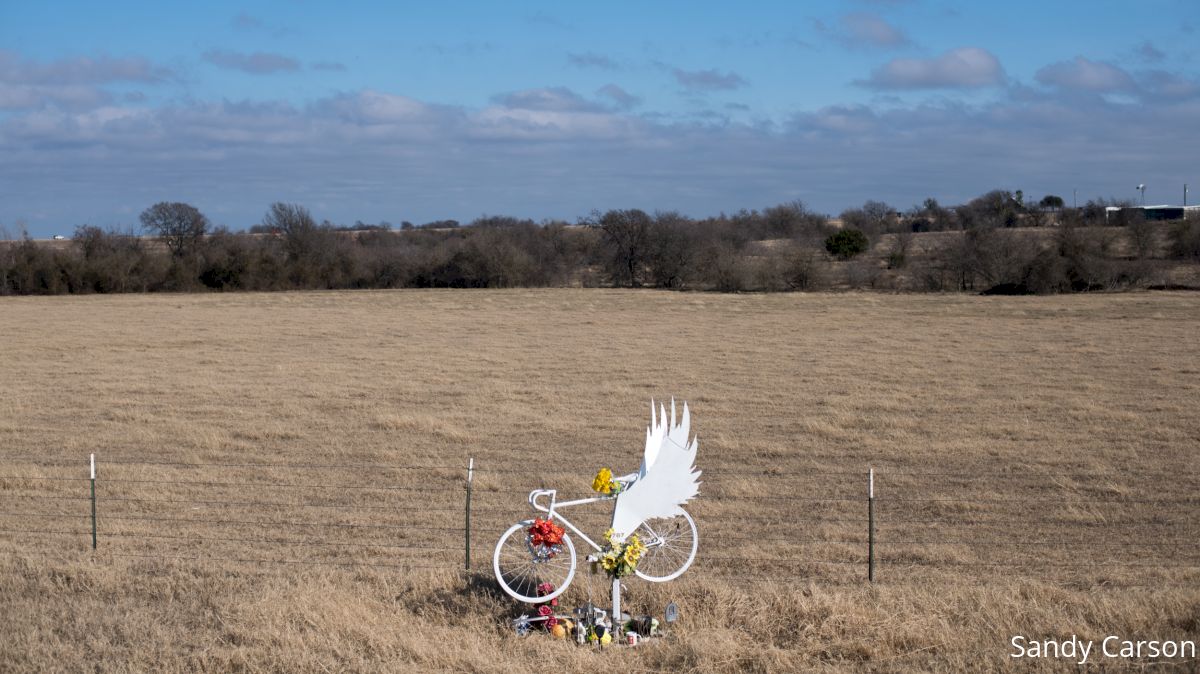
Twilight turned to night, and Tommy Ketterhagen still hadn’t come home.
On the evening of January 23, 2017, Tom and Luz Ketterhagen called their 19-year-old son’s friends, then the local hospitals, and then the police. They went out looking for Tommy themselves, driving the back roads around Georgetown, Texas, where they knew Tommy liked to train.
Earlier that afternoon, Luz had passed Tommy on his bike while driving to visit her mother, who was sick with cancer.
“When we see the kids out riding, they normally always wave,” Luz says.
But Tommy was looking ahead, perhaps focused on an interval effort. In the back of the van, the three youngest Ketterhagen children voiced their disappointment that their big brother hadn’t noticed them.
Tommy’s brother John, 16, had gotten home just a little too late to ride with Tommy, but had gone out on his own ride. He passed Tommy going the other direction. Again, Tommy didn’t look up.
That evening, when John arrived home and Tommy still hadn’t returned, Tom and Luz tried not to worry. But as the hours passed, they knew something was wrong.
“My mind didn’t want to go anywhere other than he had mechanical problems—he went off the road and hit a tree, he was unconscious,” Tom says.
Tommy’s family searched for him until about 3 AM, focusing their efforts on routes that circled Lake Georgetown. After finding no sign of him, they went home to get a few hours of rest and to plan where they’d look next. Early the next morning, they resumed their search, taking separate cars.
The story of what had happened to Tommy, and the criminal case that followed, soon captured headlines and spread across social media; it inspired rage, heartache, hope, despair—and questions of injustice and corruption. But as the sun rose on January 24, Tom and Luz were still just a father and a mother who could imagine only a future in which their child would be OK.
Around 7:30 AM, Luz drove down the 2300 block of Patriot Way, a new, quiet road with a wide shoulder near the State Highway 130 toll road.
In the middle of the pavement, she saw a cycling shoe, and in the grass a bent wheel.
The Bike Was ‘Broken Like A Puzzle’
“It was such an ordinary day,” Luz recalls—picking up the older kids from club meetings and sports practices, homework, baths, bedtime. On the Monday Tommy went missing, the end of the day was filled with the typical rituals of the Ketterhagen household, where at the beginning of 2017 seven children still lived at home.
Devoutly Catholic, Luz and Tom met in 1990 while doing volunteer work in South Texas. On their first date, Tom had asked Luz how many children she wanted.
“Eleven,” she replied with conviction.
“Well, I don’t think I’d want any more than 10,” Tom said, only half joking.
But that’s how many they’d had, with Tommy exactly in the middle.
At the start of 2017, Tommy had been back home for a little over a year. A talented and passionate soccer player, he had walked on to the Northeast Texas Community College’s nationally ranked soccer program and was voted team captain. But, ultimately, he felt that college wasn’t for him; he missed his family. At the end of his first semester, Tommy received special permission to take his exams online so that he could be home to help with his baby sister, Zelie, who’d just been born.
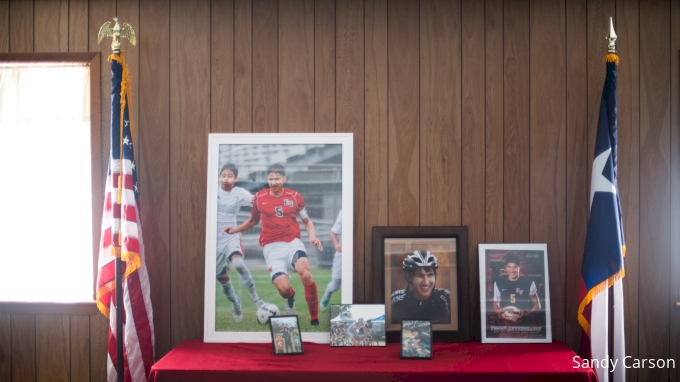
Memories of Tommy (Photo by Sandy Carson)
After that, Tommy didn’t return to college. He traveled, worked short-term jobs, and became more serious about bike racing. Much of the Ketterhagens’ life revolves around cycling, and four of their seven boys had picked up racing. Tommy’s older brother Robby, 23, is an elite amateur racer, and had coached Tommy. Or had tried to. Robby calls Tommy the most gifted athlete in the family, saying that in his first month of dedicated training Tommy had gotten “insanely strong.” But Robby also says Tommy had seemed incapable of taking a rest day—he’d go out and do a spontaneous 10-minute interval or an hour as hard as he could.
Rather than pursue a college degree, Tommy decided to become a personal trainer and was on the cusp of taking his certification exam. The morning before his last ride, he was studying at the library.
* * *
On the evening of January 23, Georgetown resident Michael Miller was driving north on the State Highway 130 toll road as the sunlight began to fade. According to his witness statement, he noticed a blue Chevy Silverado pickup approaching quickly behind him, weaving through traffic.
Miller began to exit onto Patriot Way and the driver of the truck—who had gotten all the way over into the left lane of Highway 130 to go around other vehicles—whipped back across multiple lanes at the last possible moment to exit in front of Miller, cutting him off.
Miller then saw the truck roll through the stop sign at the intersection of Patriot Way and turn left. Miller also turned left. At a slight “S-curve” in the road, Miller saw the truck drive across the center turn lane, across the oncoming traffic lane, and into the wide shoulder on the wrong side of the road. Then Miller saw a bicycle wheel fly up into the air.
Toll road data confirms Miller’s estimate of the time, around 6:35 PM. Sunset was approximately half an hour before. Miller later said that since he hadn’t seen a person at the point of impact, he thought the truck had hit an abandoned bicycle.
After seeing the news coverage on Tuesday afternoon about a 19-year-old cyclist who’d been killed and left at the side of the road, Miller contacted the police.
He described the vehicle. He also described the two men who had gotten out of the car, quickly looked around, and then accelerated away.
* * *
When Luz stopped and pulled off to the side of the road, Tommy’s 11-year-old brother Brendan got out of the car with her. Luz called 911 and told Brendan to try to flag someone down.
“I walked up to him, and it’s Tommy,” Luz says. “At that point, I was just thinking, ‘I need to get an ambulance here.’ Even though I knew he was dead.
“He was lying on his back, kind of straight. One eye was still open, and it seemed like he was looking up, squinting. Maybe smiling,” Luz says. “His bike had broken like a puzzle. Everything flew in one direction and just landed around him. Everything was in pieces, just little pieces.”
Luz covered Tommy with her jacket and cradled his head in her arms.
“I’m sorry I didn’t prevent this,” she said. “I’m sorry that you’re here.”
By the time Tom made it across town from where he’d been searching, first responders had arrived, and the crash site had been cordoned off as a crime scene. He wasn’t allowed to see Tommy.
“We all like to think that he wasn’t alone when he died,” Luz says, “That he was able to see an angel, Mary, God . . . that there was some comfort for him at that time.”
* * *
Evidence at the scene, along with Miller’s testimony, helped police narrow their search and pull the address of the one vehicle in their system that matched.
On Wednesday, January 25, at the Georgetown residence of the vehicle owner’s mother, police located the truck behind a locked gate, and a DPS helicopter captured images of extensive front-end damage.
That Thursday, Aaron Richard Davison, 21, submitted a written statement through his lawyers in which he admitted to being the driver responsible for hitting and killing Tommy. At an arranged time on Friday morning, Davison turned himself in and was taken to the Williamson County Jail on a $50,000 bail.
Davison’s family owns several Auntie Anne’s franchises in the area. Two prominent Central Texas attorneys were hired to represent Davison in the case.
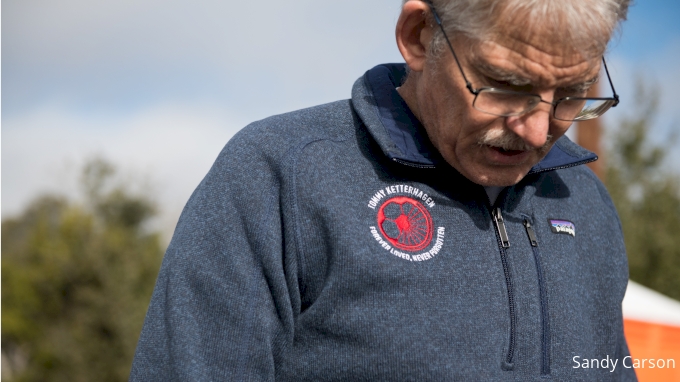 Tom Ketterhagen at his son's Memorial Road Race (Sandy Carson)
Tom Ketterhagen at his son's Memorial Road Race (Sandy Carson)
Dan Gattis, a former member of the Texas House of Representatives who owns a practice specializing in personal injury and business litigation, has stated he is a close friend of the family and worked primarily in a consulting role. Joe Turner, nicknamed “Mad Dog,” is an Austin defense attorney well-known for his past representation of celebrity clients such as Matthew McConaughey and Willie Nelson, as well as high-profile murder cases; he represented former University of Texas student Colton Pitonyak, who was sentenced to 55 years in prison for the 2005 murder and dismemberment of Jennifer Cave.
Turner and Gattis had represented Davison in previous cases. In 2014, Davison was charged twice with theft, and in 2013 he was arrested for possession of marijuana in a drug-free zone.
The passenger in Davison’s vehicle, Cody Wayne Crow, 22, was not charged with a crime in connection with Tommy’s death (under current law a passenger has no legal obligation to render aid). In a 2015 charge brought against him for marijuana possession, Crow had been appointed a public defender. When questioned by investigators in Tommy’s case, however, Crow was represented by Davison’s lawyers.
In a statement to the media, Turner said that Davison had dropped his phone while driving on Patriot Way. He’d reached down to pick it up, swerved across the road, and hit something, but he didn’t know what. Turner stated that when Davison and Crow got out of the truck to look around, they did not see anything and did not realize at the time that they were responsible for the death of a person.
Outrage, Precedent, & The Definition Of Recklessness
As news of Tommy’s death spread, members of the cycling community channeled their sadness and outrage by bringing the Ketterhagens meals, sending words of condolence, and donating more than $50,000 to a GoFundMe account that became the Tommy Ketterhagen Memorial Foundation. (The Foundation now supports bicycle safety awareness and initiatives in and around Central Texas.) The Ketterhagens received letters from people in 15 different states and four countries.
A ride was organized in Georgetown on the Sunday after the crash, and as many as 500 riders attended. Tommy’s brothers and his father led the group to the crash site, where a memorial “ghost bike” was placed.
The Williamson County District Attorney’s office received more than a hundred letters. Though Tom credits the quality of the investigative work from day one, he believes this evidence of the community’s support and indignation—the letters, social media comments, press coverage, and public gatherings—had an impact.
Among cyclists there was a sense that something must be done, that death should not be quietly accepted as the price cyclists—or any other road user—should have to pay for using public roadways. There was a sense, too, that what had happened to Tommy was part of a larger problem, that narratives like Davison’s dropped phone, regardless of their truth, are commonly viewed as accident, or innocent mistake, rather than willful disregard for the lives of others.
In 2016, the last year for which complete data is available, there were 455 fatalities in Texas and a total of 109,629 crashes linked to distracted driving. Nationally, there were 3,450 distraction-related traffic deaths. At the state and national level, cyclist and pedestrian deaths increased from 2015 to 2016; in Texas, there was a 25-percent increase in cyclist deaths and a 21-percent increase in pedestrian deaths.
In a Central Texas case from 2009, cyclists Alexandra Bruehler, 36, and Gregory Bruehler, 42, were riding their tandem in the 11-foot shoulder of Texas Highway 16 near Helotes when driver Gilbert John Sullaway Jr., 40, veered out of his lane and struck them. Both Alexandra and Gregory were killed.
Witnesses reported that Sullaway had crossed into the shoulder at least one other time prior to the crash and estimated that Sullaway was traveling 85 mph in a 65-mph zone. A jury found him not guilty of the charge of criminally negligent homicide.
“Have you ever drifted? Have you ever looked off the roadway?” Sullaway’s attorney Mark Stevens asked jurors during the trial. “That's what people do. It doesn't mean they're criminals when they do it.”
In a significant case last summer, the Texas Court of Criminal Appeals essentially provided rule-based guidance on defining criminal negligence. In Queeman v. State, driver Robert Alan Queeman was convicted by a jury of criminally negligent homicide. Queeman had been tailgating and speeding when he caused a collision that resulted in the death of another person. But the appeals court reversed the jury’s verdict. The court stated the evidence in the case was legally insufficient and that Queeman’s actions did not represent a “gross deviation” from the standard of care that an ordinary driver would exercise under the circumstances.
The Queeman case upheld the idea that a driver is not responsible for a death when he or she violates traffic laws; a driver must be deemed guilty of a particularly egregious or blameworthy behavior to be held accountable. As long as it’s a “routine” way of breaking laws, drivers can get a free pass.
Other cases, however, show the power of the public’s response in shaping the law and seeking higher penalties.
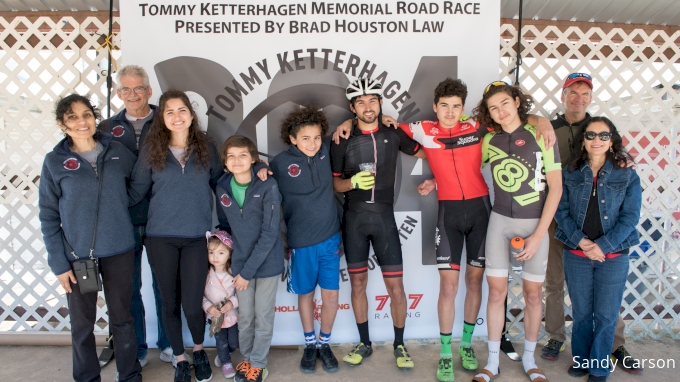
The Ketterhagen family, one year after Tommy's death (Sandy Carson)
In 2011, hit-and-run driver Gabrielle Nestande, 23, struck 30-year-old pedestrian Courtney Griffin and left Griffin to die of her injuries lying in a driveway. In a jury trial two years later, Nestande claimed that she’d been setting an alarm on her phone at the time of the crash and had not been aware she’d struck a person. Investigators presented evidence that Nestande had been drinking at a bar before the crash occurred, but the jury convicted Nestande with criminally negligent homicide and sentenced her to only 10 years’ probation.
The publicity and outrage surrounding the Nestande case spurred lawmakers to change hit-and-run laws in Texas, increasing the penalty of a hit-and-run to a term of 20 years to match that of intoxication manslaughter. Amendments also strengthened the law to make it easier for drivers like Aaron Davison to be charged with a crime in the first place.
The charge that initially put Davison behind bars in the Tommy Ketterhagen case was leaving the scene of an accident involving death. As the investigation progressed, however, prosecutors sought to charge him with much more.
Offenders like Nestande and Davison, who have no prior felony convictions, often inspire particular leniency from a jury, however, especially considering the law’s “reasonable person standard” from the viewpoint of a young person.
Would a grand jury, and potentially a trial jury, believe that Davison had justification not to perform a reasonable search and render aid? Would they decide that the cause of Tommy’s death was “accident” rather than “recklessness?”
A Sense Of Justice And Accountability
Davison owns a number of social media accounts devoted to “mudding”—off-road driving and racing in trucks on wet terrain. Luz says Patriot Way is known as a road where young drivers go to drag race or drive fast.
Four hours before Davison hit and killed Tommy on January 23, Davison was pulled over and ticketed for driving 78 mph in a 55-mph zone.
Williamson County Assistant District Attorney Dee McWilliams, who prosecuted the case, believes that Davison was “straightening the road” when he hit Tommy—essentially taking the fastest line through the curving road, regardless of which lane that put him in.
McWilliams says there was no evidence to support intent—neither an attempt to intimidate or scare a cyclist nor a personal vendetta. Though they were close in age, Davison had gone to a private high school in Georgetown while Tommy had attended the public high school two miles from where he’d died.
Davison and Tommy had probably never met, though their circles did overlap. Tommy’s siblings shared connections to Davison’s on social media.
It’s still a mystery why Tommy was out after dark. The file from the GPS app he used to track his rides, Strava, cut off more than an hour earlier, showing it was ended by the user. Tommy didn’t usually ride after sunset and would have brought lights if he’d planned on it. Had he gotten a flat? Maybe some other mechanical issue? Or had he just wanted to make a second loop and lost track of the time?
Investigators don’t know if Tommy was on his bike when he was hit.
“I think it was important for the Ketterhagens to be able to get some answers,” Williamson County District Attorney Shawn Dick says, explaining that there are a lot of rumors when a case like this comes out, and that some of those rumors might even have indicated that Tommy had done something wrong.
“I think it’s really important to show that this was all Aaron Davison’s fault, every bit of it,” Dick says.
Davison had gone at a high speed into the oncoming lane of traffic during conditions of limited visibility and could have just as easily struck a person walking, a family in a car, anyone.
In June 2017, a grand jury indicted Davison on the charge of accident involving death and handed down two other second-degree felony charges: aggravated assault with a deadly weapon, and manslaughter.
For unpremeditated vehicular homicide, the indictment was effectively the maximum amount for which Davison could have been charged.
* * *
Davison did not post bail, remaining in the Williamson County jail for more than a year as the case against him continued.
In building a case, prosecutors typically consider the wishes of the victim’s family. The DA’s office proposed a plea agreement to the Ketterhagens: four years in prison for manslaughter and 10 years’ probation for leaving the scene of an accident involving death. The charge of aggravated assault with a deadly weapon would be dropped.
Tom says he told them, “Please don’t do a plea deal on our behalf. It’s your case, but as far as we’re concerned, let’s go to trial.”
The Ketterhagens didn’t want what had happened to Tommy to be silenced.
“The risk of Aaron walking free was a risk we were willing to take for more truth and for people to better understand the case,” Tom says.
But as time went on, Tom and Luz believed that the investigation was revealing the facts, and they welcomed a sense of resolution. The Ketterhagens gave the DA’s office their blessing to pursue a plea deal, accepting what they’d been told: that it was a reasonable punishment for the crime in light of past judgments, and that a short sentence in prison followed by a long probation would be the best way for Davison to achieve meaningful change. The prison sentence was meant to have the effect of “shock probation”—enough time to significantly impact a young offender without losing all chance for redemption.
The DA first offered the plea agreement to Davison’s defense team in August of 2017.
The plea agreement included unique probation terms. Any moving violation would be considered a violation of Davison’s probation, for which he would go before a judge and could receive up to 10 years in prison. Davison would also be required to take a driving course every year of his probation, as well as undergo frequent testing for drugs and alcohol.
The DA’s office had also considered factors in Davison’s favor. Davison had in fact turned himself in. (Before the discovery of the vehicle by authorities or the identification of Davison as a suspect, Turner had left a voicemail for the DA.) Davison had also freely admitted to being the driver. Without that admission, the DA would have had to prove Davison was driving the vehicle at the time of the crash.
The defense had submitted an EtG “80-hour” test proving Davison had not been drinking at the time of the crash. And prosecutors considered the fact that Davison had remained in jail rather than posting bail as a sign that Davison or his family were showing a degree of remorse.
“We wanted to provide the appropriate punishment for the severity of the act while still taking into account the fact that he came forward and took responsibility for it, because we want to encourage that,” McWilliams says. “We don’t want unsolved hit-and-runs.”
Had the case gone to a jury trial, Davison could have gotten up to 20 years in prison for any one of the charges. Or he could have walked away with nothing.
The Ketterhagens had been told initially by the DA that the terms of the sentence were non-negotiable. But the defense successfully brought the original prison sentence down to two years and had a deadly weapon finding dropped from the manslaughter charge.
Since Davison would now be classified as a non-violent offender, he would quickly be eligible for parole. But the DA’s office assured the Ketterhagens that, given the circumstances of the case, it was unlikely the parole board would grant his release.
Though Davison’s attorneys had worked hard to come to terms on a plea agreement, inexplicably, they seemed to delay their final acceptance of the deal until—almost to the day—a year passed.
At that time, the Ketterhagens were told that Turner was suddenly eager to move things along, and had expressed sympathy for the Ketterhagens. They had “waited long enough,” he said.
In January, on the one-year anniversary of when Tommy’s body was found, Davison pleaded guilty before the court, accepting a sentence of two years for manslaughter and 10 years’ probation for leaving the scene of an accident involving death. In the plea, he admitted to driving recklessly; he didn’t admit to knowing he’d hit Tommy, however, and he did not retract the story of the dropped phone.
Many people who’d been closely following the case vented on social media that the punishment wasn’t enough. But others, including the Ketterhagens, saw justice in the plea deal, the time in state prison, and the restrictive probation.
Davison had admitted to his crimes and was going to be held accountable, at least in some sense, for taking Tommy’s life.
* * *
Davison was formally sentenced by Judge Rick Kennon of the 368th District Court on March 6, 2018.
Just before Tommy’s case was called, roughly a dozen investigators and police officers filled the back of the courtroom. Their presence brought a sense of solemnity to the proceedings, as well as a feeling of strength and support. They made it a point to be there.
As Davison stood before the court, Judge Kennon said that he had a “hard time” with Davison’s probation sentence for the charge of accident involving death. Kennon said that the Ketterhagens’ agreement with the terms was crucial in his approval of the plea deal.
During the sentencing, both Davison and the Ketterhagens had the opportunity to deliver public statements. Davison went first.
He said he understood that the sentence could not bring Tommy back but that he was deeply sorry for his actions.
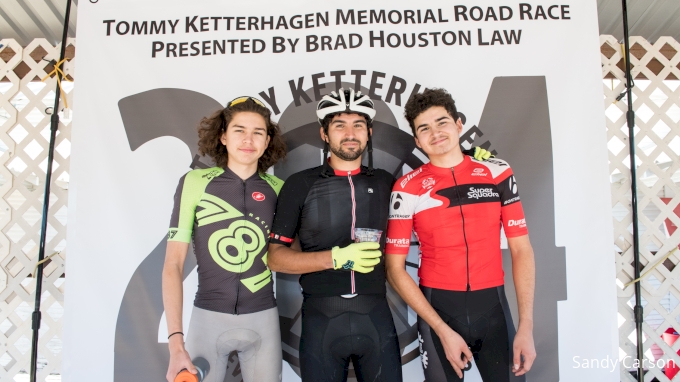
Tommy's brothers, from left to right: Jose, Robby, and John (Sandy Carson)
Tom and Luz delivered their victim impact statements from the witness box, sitting across from Davison. They addressed him directly.
Tom explained how, following Tommy’s death, he retired from a career of more than three decades as a software engineer.
“I can no longer work with the passion and attention that it required,” he said. “My new job is to keep my family together and to honor Tommy.”
In her remarks, Luz called what Davison had done a “violation of dignity and humanity.”
“Your actions robbed me of helping him on his deathbed, your actions robbed him of having the comfort of his family around him at his final breath, and your actions robbed him of receiving the last sacraments of his church,” she said. “Instead was marked upon our hearts the memory of what he had to suffer. . . .
“My consolation is that our Heavenly Father always brings good out of evil.”
Luz added something to the end of her speech that was not in her prepared remarks—she told Davison she accepted his apology, and that she forgave him for what he had done.
It wasn’t until after sentencing was complete that the Ketterhagens learned of some specific details surrounding Tommy’s death. In a meeting with investigators after the hearing, the Ketterhagens were told that Tommy’s head hit the windshield where the registration sticker would have been, and that the impact of his body caused substantial damage to the glass and front of the truck.
They also learned that Tommy’s body would have been carried for some time on the hood.
Suddenly, Davison Is Free
On Friday, March 23, just 17 days after Aaron Davison was sentenced, the Ketterhagens received what seemed to be an automated email from the Texas Department of Justice Victim Services Division.
“The TDCJ issued a release certificate for this offender on 3/22/2018,” the email said, and included a broken link to an information page on something called the “Ex Parte Retzlaff court decision.”
Aaron Davison had been paroled directly from county jail without board review or prior notification to the Ketterhagens or the DA’s office. He was out.
Tom described being in a state of shock.
“It wasn’t anywhere near like when we found out about Tommy,” he says. “But it was along those lines.”
The Ketterhagens wanted to wait to tell their children, since they’d called the TDCJ at the close of the business day and had found out very little. But Maria, 23, who lives in Tucson, was shown Snapchat messages that appear to be from Davison's account, posted shortly after his release. When she called Tom and Luz, she was crying.
In one screenshot, there’s a black Coach watch with the caption “My cousins liveeeee badass getting out present.”
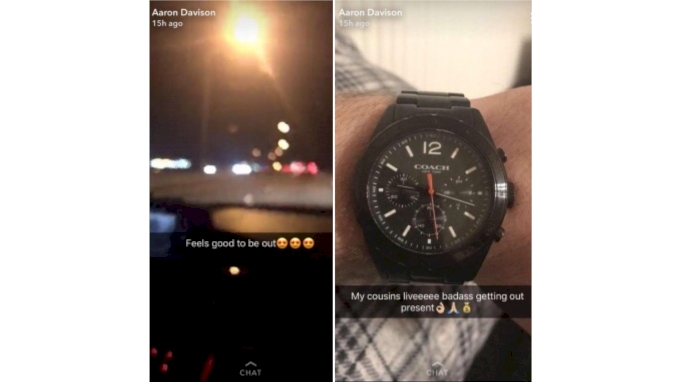
The 2004 Ex Parte Retzlaff court decision requires that an offender be given 30 days’ notice of his or her eligibility for a review for discretionary mandatory supervision; if this notice is not given, the offender must be released without parole board review.
“In terms of parole eligibility, statute determines when someone becomes eligible,” says Timothy McDonnell, chief of staff of the Texas Board of Pardons and Paroles. “In some cases, that’s 25 percent of the time served or 50 percent of the time served, depending on the offense. Good time is also calculated in for some offenses.”
McDonnell says sometimes “one or both sides” in a case are unaware of the impact of parole laws and what date the offender is eligible for parole. The notice required by Retzlaff cannot be sent before sentencing, so if at the time of sentencing an offender has served enough time and is past his or her projected release date, the offender will be released automatically. (Violent offenses, listed under §508.149(a) of the Texas Government Code, are not eligible for mandatory supervision.)
Davison had served 404 days in the county jail; given his two-year sentence and credit for good time, Davison was eligible for parole on December 30, 2017. McDonnell explains that when Davison pleaded out on March 6, he was immediately past his projected release date, and the board did not have the power to vote on his release, only the power to impose special conditions.
These special conditions include the maximum level of supervision from a parole officer, as well as substance abuse testing. Davison is also not permitted to drive a motor vehicle while on parole without special authorization from a parole panel.
The Monday following Davison’s release, the DA made public statements about the case, expressing outrage.
“Someone’s entitled to be responsible to be given notice before they’re even sentenced?” Dick says. He said that in a discussion in a room of lawyers with a sum of 100 years of legal experience, no one had ever heard of Retzlaff.
The victim services email that the Ketterhagens received had called Retzlaff cases “rare.”
When asked whether Retzlaff was a rare legal loophole, McDonnell indicated that cases that require 30-day notification and could potentially become a Retzlaff case are common.
“I do not have figures on how many offenders were actually released via the Retzlaff decision without a release vote from the parole board since the board never had the opportunity to vote the case for release,” he says. “I don’t see this as a loophole, rather a court ruling.”
Professor Sandra Guerra Thompson, director of the Criminal Justice Institute at the University of Houston Law Center, says she was not familiar with the Retzlaff ruling. However, after reading it, she says, “The law is very clear. If you don’t get that notice, then they have to let you go by that date.”
She says she finds it unlikely that Davison’s lawyers would have planned for Retzlaff from the beginning, though she also says it was very unusual for a defendant with the means to post bail to remain in county jail for so long.
“The more typical strategy for the defense is to get them out right away, to get them into a program and drag out the case as long as you can.”
The jury is then looking at incarcerating someone who’s been on his best behavior for a long period of time, she explains, and will have to weigh the risk of ruining his life with incarceration.
Asked whether the release process for Davison followed usual procedures, Thompson pauses and says, “The truth of the matter is, there usually isn’t anyone watching when people get released.”
When asked via a public information request for statistical information regarding Retzlaff cases, including the number of Retzlaff cases since the law's enactment in 2004 or how many offenders had been paroled directly from county jail, the TDCJ responded that the organization, "does not track 'Retzlaff cases.'"

A ghost bike for Tommy on Patriot Way (Sandy Carson)
The Ketterhagens believe that Turner and Gattis likely used Retzlaff as a strategy, spending months negotiating a plea deal that they were aware in the end would be meaningless.
And Tom and Luz still have many questions about Davison’s release. Was it normal procedure that Davison was paroled straight from county jail? Why was parole lawyer Gary Cohen, who they’ve been told is influential with the BPP, hired by Davison if the release was purely automatic? It’s their understanding that victim statements were included with the packet of information needed for Davison’s release—why have they been told that their information was not received in time for notification? Why have even the TDCJ representatives they’ve spoken to expressed their surprise at the speed of Davison’s release, or the fact that he was released without ever being officially processed by the TDCJ?
“I’m not going to stop until we fix this,” Dick says. “Or if we need to fix the procedure or the law or change the statute, we’ll work on that.”
On April 5, members of the Williamson County DA’s office, the BPP, the TDCJ, and state representative Terry Wilson held a phone conference to discuss changing legislation.
Of course, any change in the law going forward will not put Davison back in jail.
* * *
There’s a Strava segment called “Tommy’s Last Mile.” At its end, after a sharp, almost 90-degree turn, the white “ghost bike” comes into view.
Brown fields, blue sky, the hum of the toll road—a setting simultaneously peaceful and without solace.
Tom says he has stood hundreds of times where Tommy had been riding and watched the cars. He’s decided it’s almost impossible to tell which lane they’re in until they’re passing. If Tommy had just moved a few feet over, Tom says, maybe he would have been safe.
It’s hard to look at grief, even for a moment—to look into Tom’s or Luz’s face as they search to make sense of the senseless. Harder still, perhaps, to see Tommy’s brothers, who look so much like him in their cycling kits and helmets and dark glasses: they seem so strong, so equally fragile.
Area cyclists hope to make the stretch of Patriot Way where Tommy died a memorial bikeway in his name; they’ve petitioned the Georgetown City Council to follow through with a bike plan for the city.
Tom and Luz have now decided to pursue a civil case against Aaron Davison, Cody Crow, and others responsible for the delay in notifying authorities of the crash. The Ketterhagens say Davison’s early release played a role in their decision to move forward with the civil trial.
For the Ketterhagens, there’s still a long road ahead.